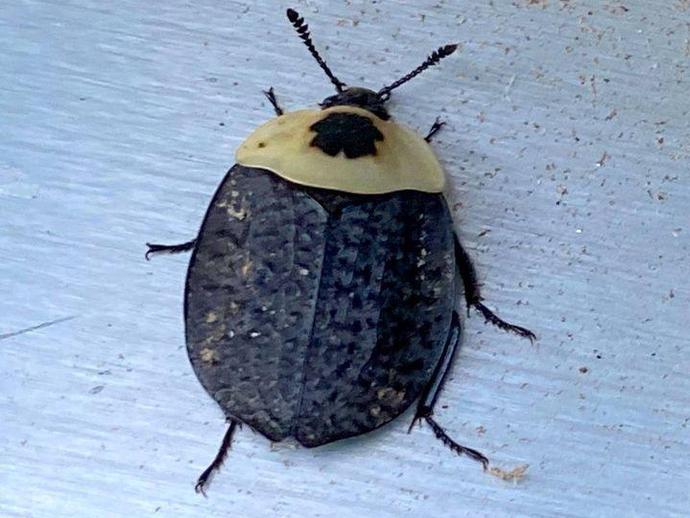July 15, 2021
Ben here with today's edition of #BenInNature presented by our friends at Carter Bank & Trust!
The American carrion beetle (Necrophila americana) is a pretty fascinating insect, if a little bit gross! These beetles can be found in North America east of the Rocky Mountains, and they play an important role in keeping the environment clean and tidy.
American carrion beetles are on the wing from the spring through the fall, searching for the carcasses of animals that have recently died. A couple of hours after flies find the carcass, the carrion beetles arrive. The adult beetles will start eating the fly larvae, and then they'll mate and lay eggs. The adults will then hang around for as long as the carcass lasts in order to eat any competitors that arrive, thereby giving their offspring the best chance of success. After the carrion beetle larvae hatch, they begin eating not only the carcass, but also any other competing larvae that they come across. After they've eaten their fill, they fall to the ground, dig into the soil, and become pupae. After emerging as adults, they overwinter until the following spring.
One interesting fact about American carrion beetles is that they engage in something called "mutualistic phoresis" with mites of the genus Poecilochirus. "Phoresis" is a non-permanent arrangement in which one organism attaches itself to another organism solely for the purposes of travel, and "mutualistic" means that the relationship benefits both parties. In this case, the mites cling to American carrion beetles, and when the beetle lands on a carcass, the mites drop off the beetle and begin eating the eggs and larvae of any flies on the carcass. The mites get a meal, while the beetle gets help removing the competition that its own larvae will face. Eventually, the mites crawl back onto the adult beetle to be transported to the next carcass, while the baby mites will hitch a ride with the juvenile carrion beetles! Even if you're an insect, it's always good to have a wingman.
ABOUT #BenInNature
Social distancing can be difficult, but it presents a great opportunity to become reacquainted with nature. In this series of posts, Administrator of Science Ben Williams ventures outdoors to record a snapshot of the unique sights that can be found in the natural world. New updates are posted Monday - Friday, with previous posts highlighted on the weekends. This series of posts is made possible thanks to the support of VMNH Corporate Partner Carter Bank & Trust (www.cbtcares.com).
NATURE PHOTO IDENTIFICATIONS
If you discover something in nature that you would like help identifying, be sure to message us right here on Facebook with a picture (please include location and date of picture) and we'll have our experts help you identify it!

 Hours & Admissions
Hours & Admissions Directions
Directions

